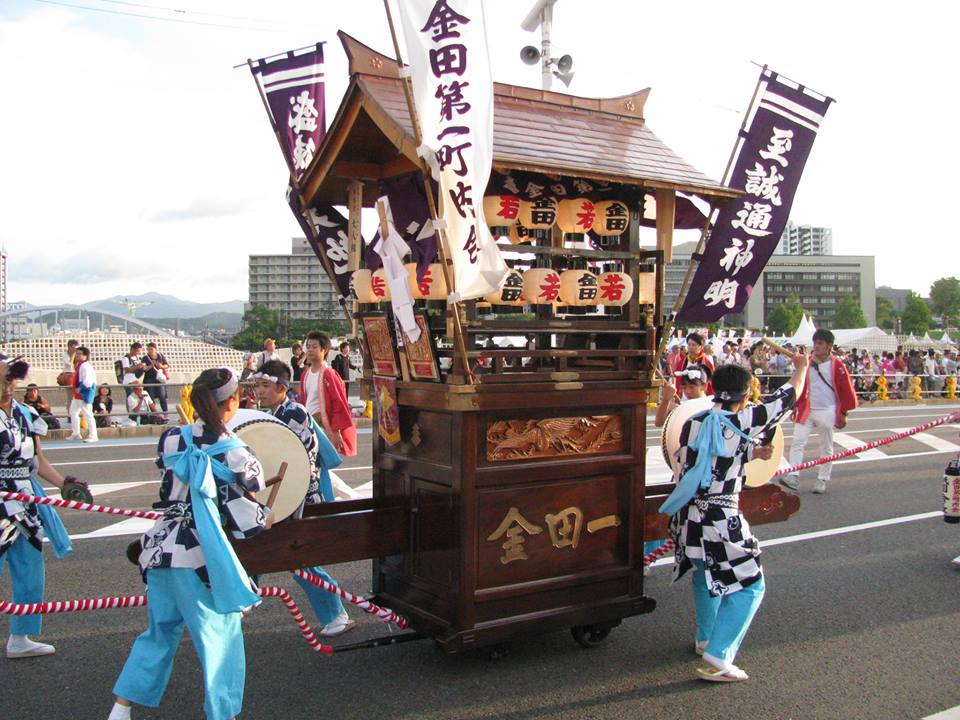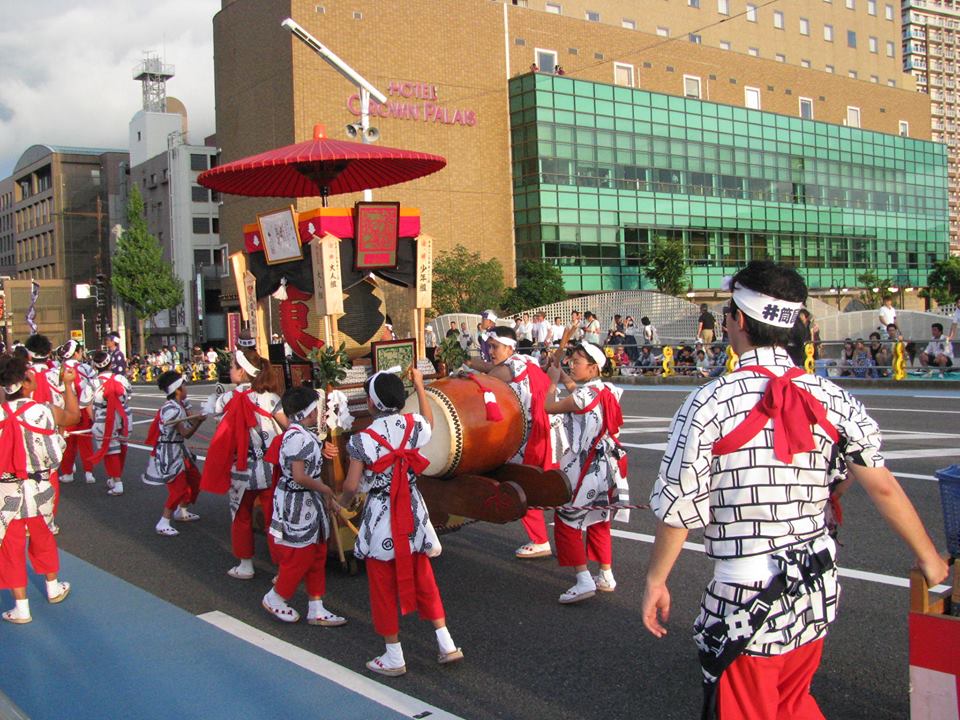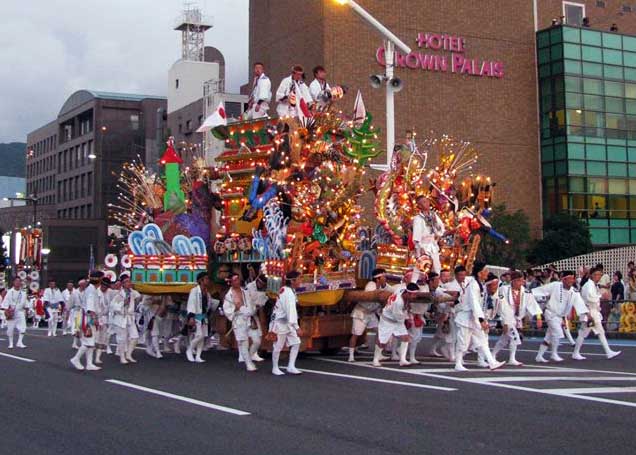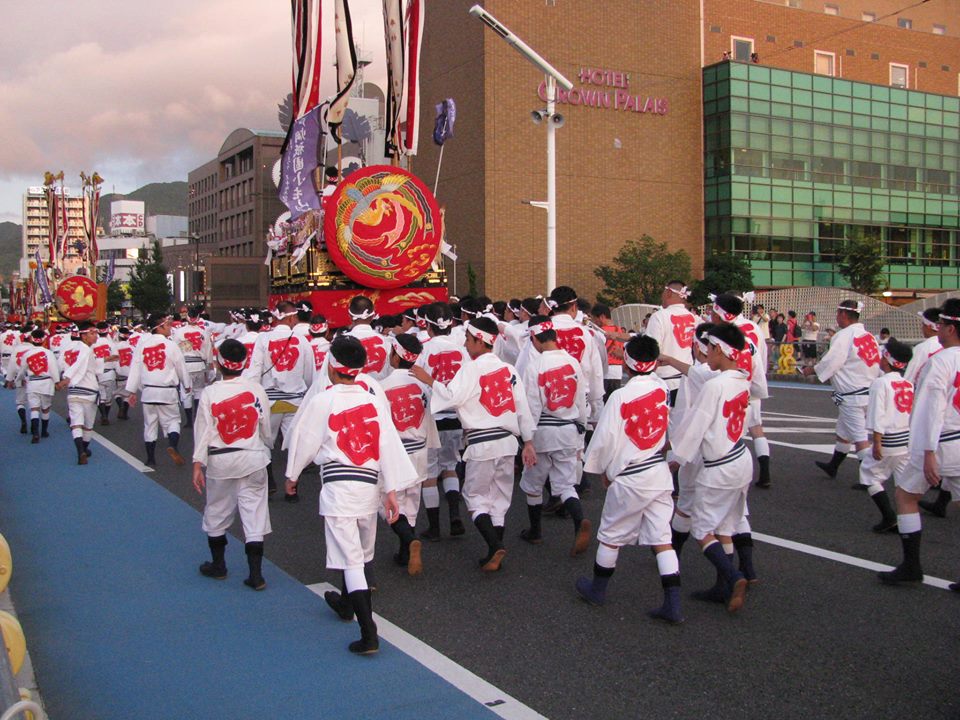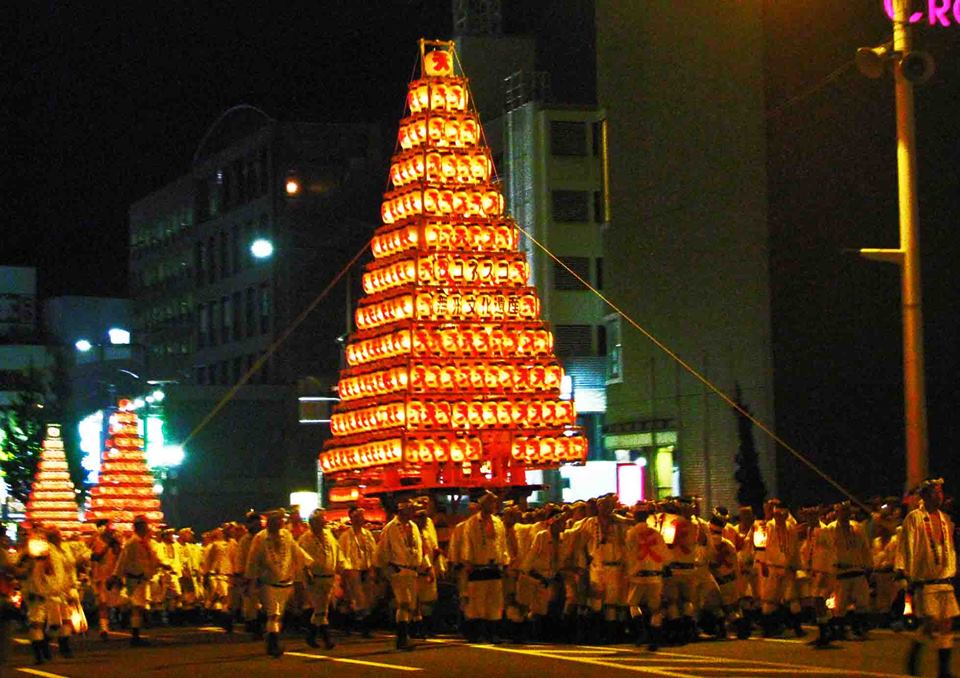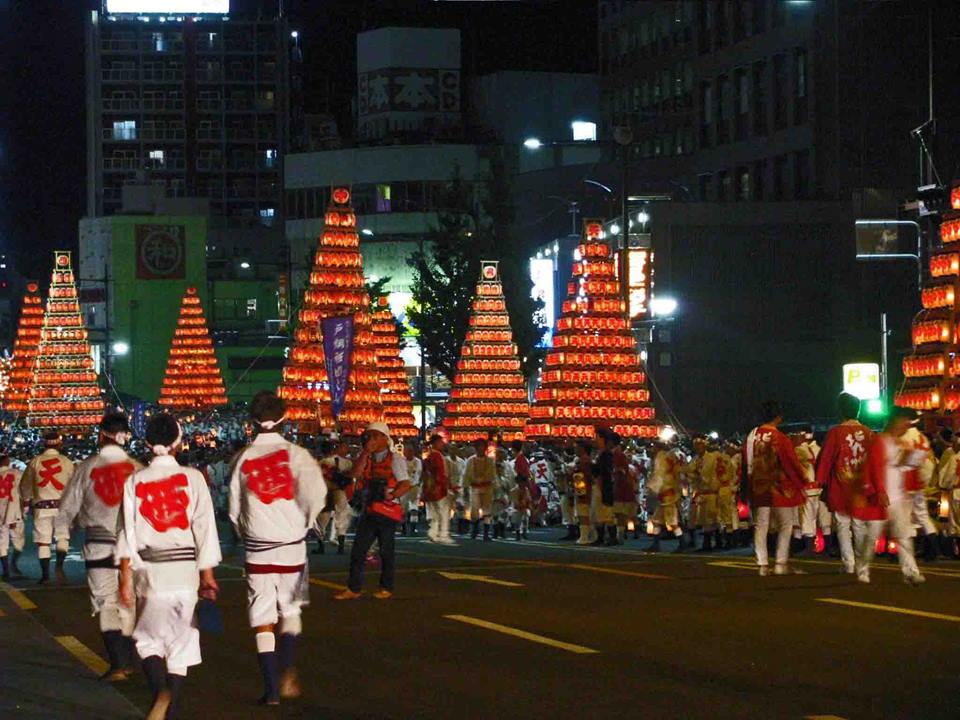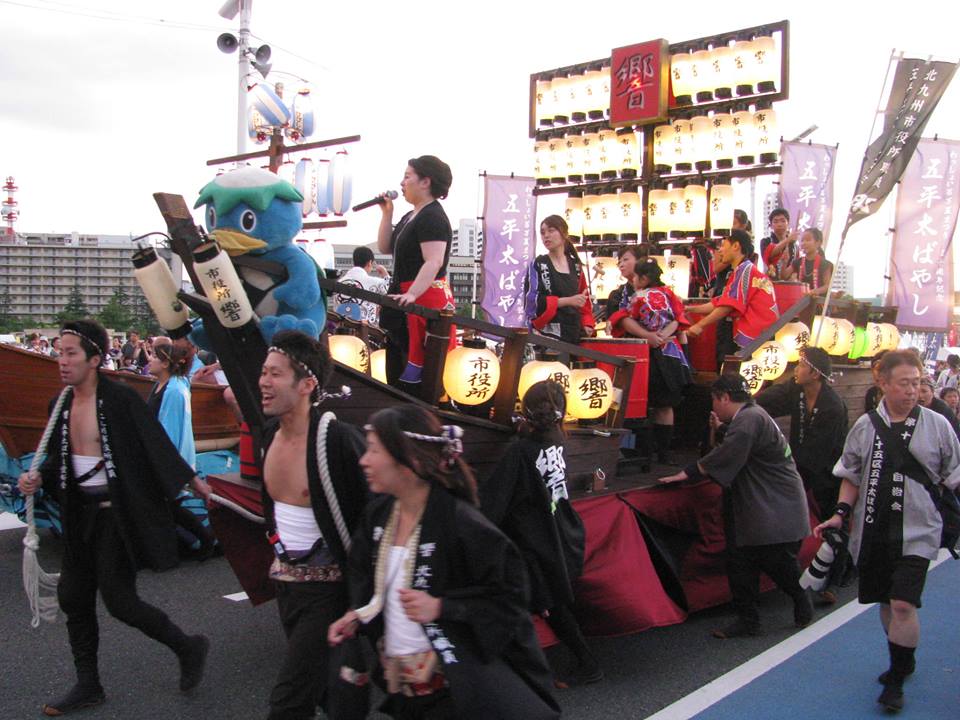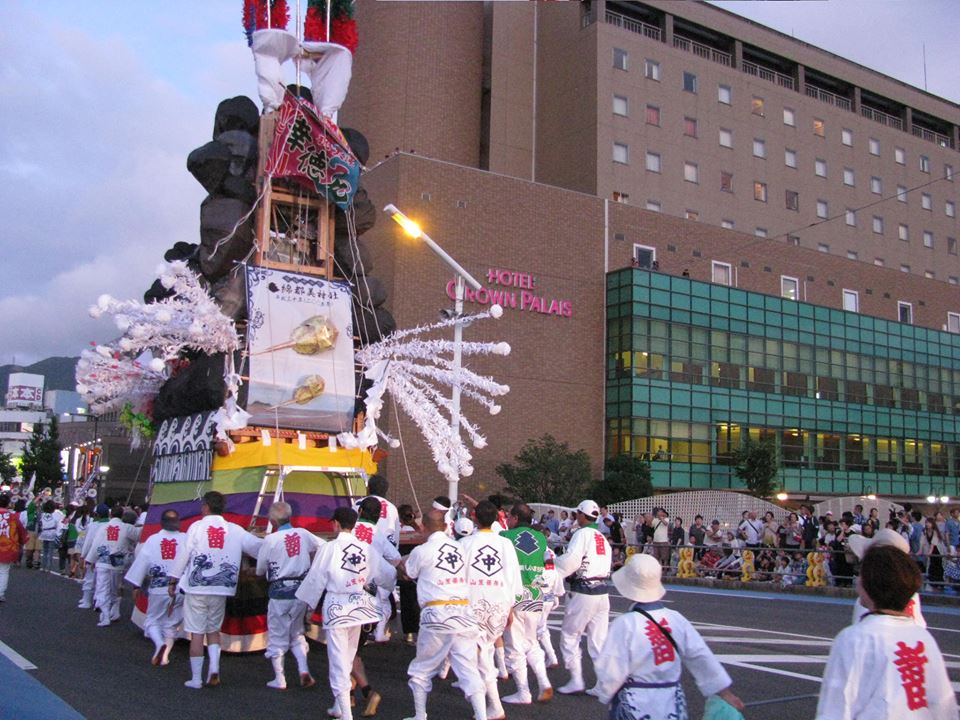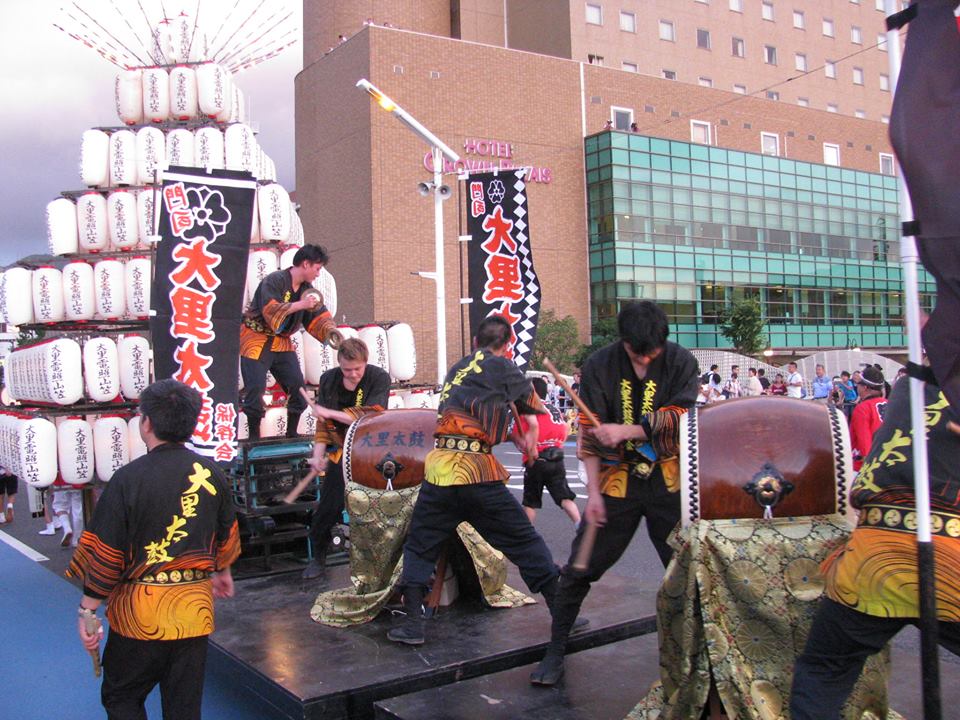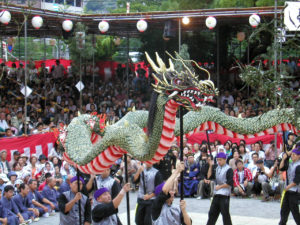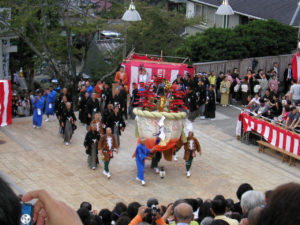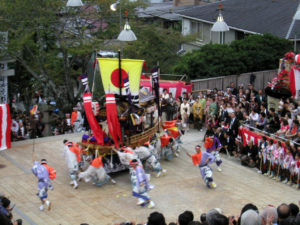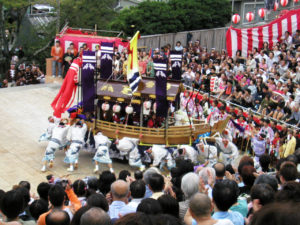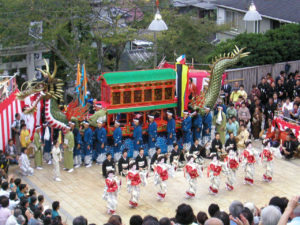Hojoya
It has a history of over 1000 years.
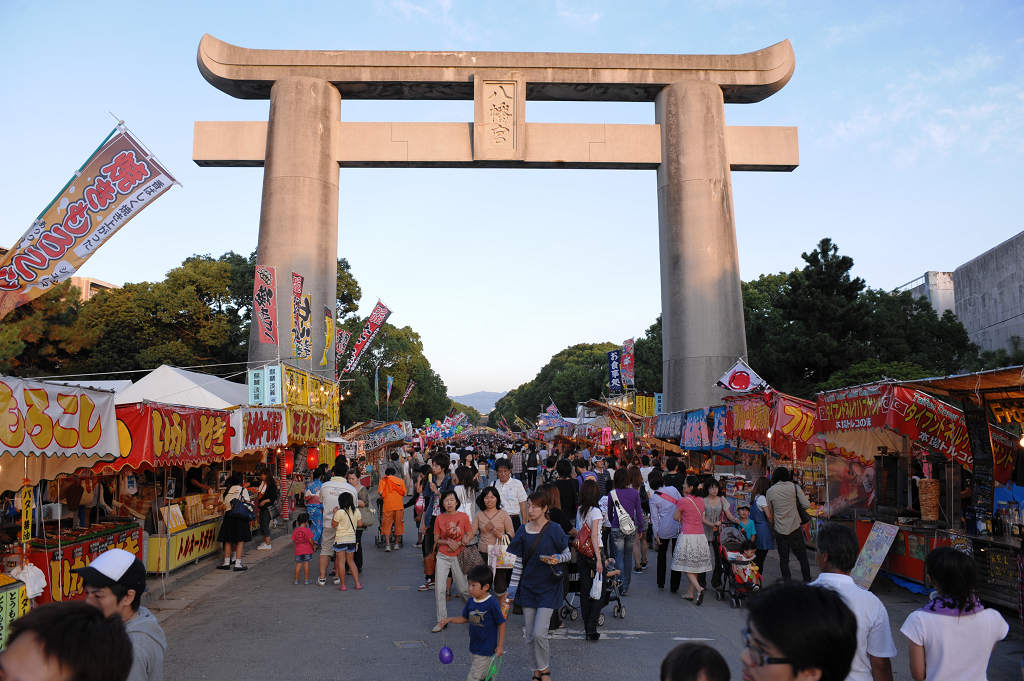 |
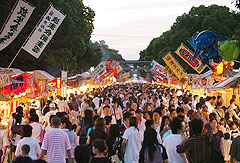 |
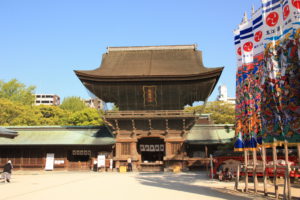 |
Hundred of doves and carp will be released on September 18 in reverence
of all living things, a solemn mikoshi (shrine) procession take place
on the 12th.
Most visitors are usually happy just to amble about, doing little more than
munch on grilled food, gulp cold beer and amuse themselves with
traditional sugar-cutting or goldfish catching games.
slice of old-time festivities in Fukuoka.
Hiburi-shinji at Aso Shrine
Hiburi-shinji is the annual festival held at Aso Shrine in Aso, Kumamoto-prefecture.
Hiburi-shinji is a Shinto ritual that signifies the wedding ceremony of the gods.
When the deity of the Himegami wrapped in oak branches and leaves arrives,
the parishioners all celebrate by lighting torches made from grass and waving
them around.
A ring of flames swinging heroically colors the Shrine at night, and the whole area
is enveloped in a fantastical atmosphere.
After Hiburi-shinji end, spring comes to Aso.
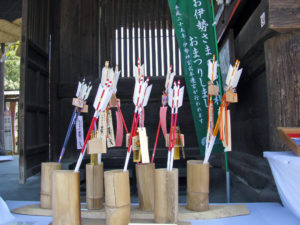 |
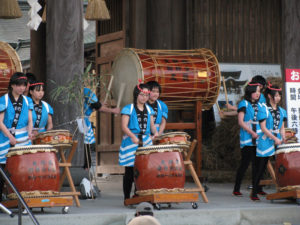 |
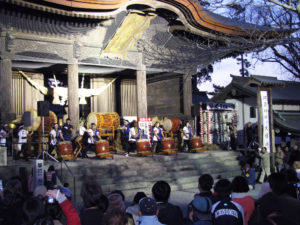 |
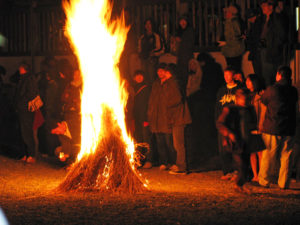 |
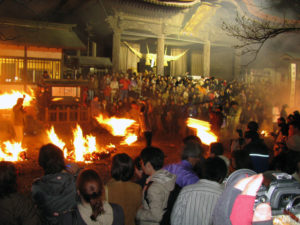 |
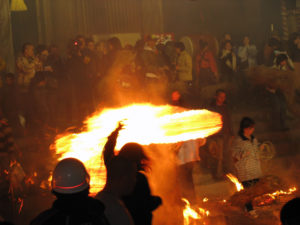 |
Wasshoi Million Summer Festival
Wasshoi Million Summer Festival is one of the festivals representing Kyushu and started in 1988
to commemorate the 25th anniversary of the formation of the city and has more than one and half
million spectators every year.
One of the greatest highlights is the firework display,this spectacular show marks the finale
・Direction : A 15 min. walk from JR Kokura Station
Nagasaki Kunchi
Nagasaki Kunchi is one of big-three festival in Japan, held on October 7 to 9 at Suwa Shrine.
The festival features Chinese dance including Ja-odori (Snake dance), this time dancing all
around the city but especially at Suwa Shrine. History of the Festival, after Christianity was
harshly suppressed in Nagasaki in 1624, a festival was dedicated to Suwa Shrine, the guardian
god of local people. It is believed that Suwa Shrine festival called “Nagasaki Kunchi” and danced
were offered to shrine with cooperated of local people in 1634.
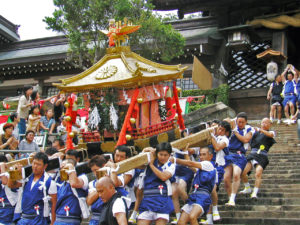 |
|
|
At the outset, dedicated dance were very simple but gradually became colorful. During Eiho Era
(1673-80), a Chinese dance with an exotic flavor offered to the shrine. The Ja-odori or snake dance
was first performed in the Nagasaki Kunchi during period 1789-1800. In 1970, the government
designated the whole of Nagasaki Kunchi dance including Ja-odori as an Important Intangible
Cultural Asset.
|
|
|
|
Tamaseseri / wooden ball catching festival
Several hundred men wearing lion cloths compete on piggy-back in two teams, the “sea” team
If the sea team wins, a bountiful fishing catch is predicted for the year; if the land team wins
a rich harvest is predicted.
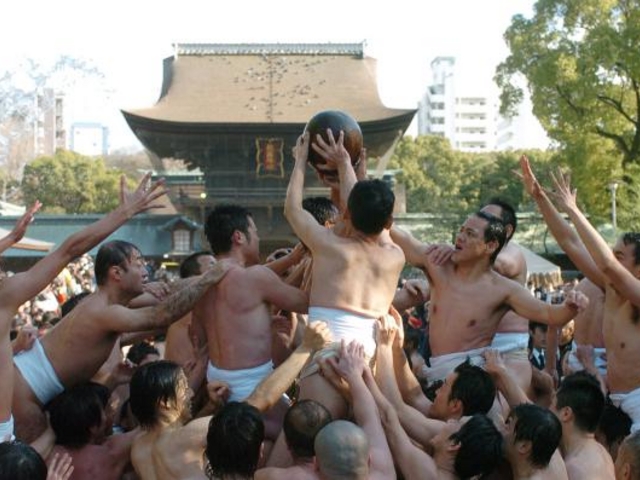 |
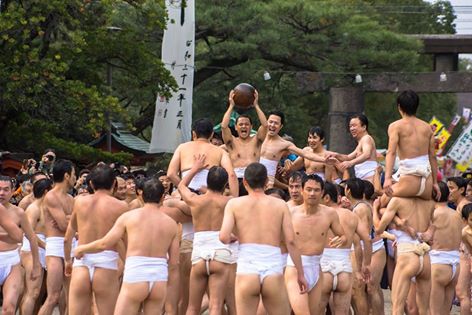 |
Chikugo Yoshii Hinadoll Festival
Hina matsuri, also called Doll’s Festival or Girls’ Day, is a special day in Japan, celebrated
each year on 3 March. A platforms covered with a red carpet-material are used to display a
set of ornamental hina dolls, representing the Emperor, Empress, attendants, and musicians
in traditional court dress of the Heian period.
It is an occasion to pray for the well-being and prosperity of girls. It is thought that the festival
has its roots in an ancient purification ceremony, in which dolls were floated down the river,
taking all of the girls’ bad luck with them.
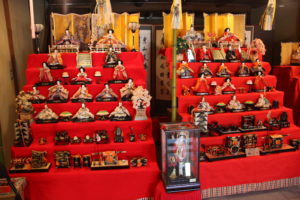 |
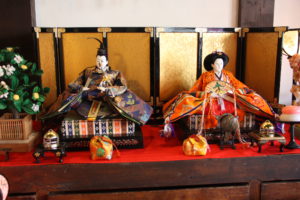 |
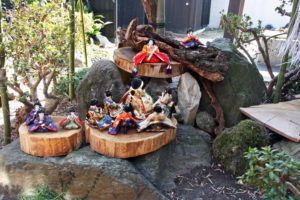 |
Yoshii-machi, Ukiha-city Hina doll Festival
from February 11 through April 3
Main Hina dolls are displayed at Shirakabe Avenue district, where the river is lined by attractive former
warehouses, all with traditional wood and white plaster exteriors. The doll displays of Ukiha usually
feature two types of dolls: okiage (paper cut-outs covered in cotton and wrapped in fabric) and hakobina
(dolls in individual display cases).
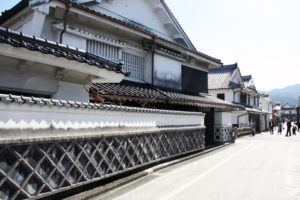 |
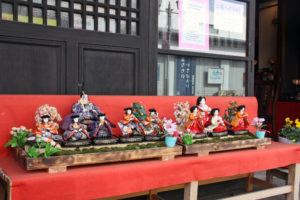 |
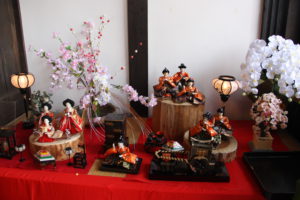 |
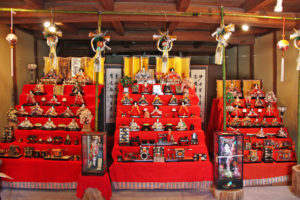 |
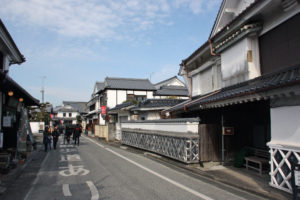 |
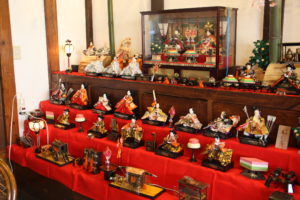 |
Yanagawa Sagemon Festival
Yanagawa Sagemon Festival is one of the most beautiful and very unique Japanese
traditional Festival in Kyushu. The festival is held from February 11 through April 3 in
Yanagawa. Hina dolls are displayed by families with girls to pray for safe growth of
their children, in Yanagawa, in addition to Hina dolls, colourful “Sagemon” are displayed.
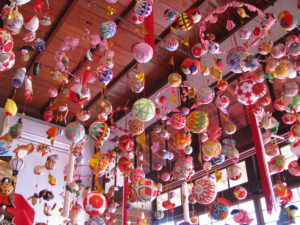 |
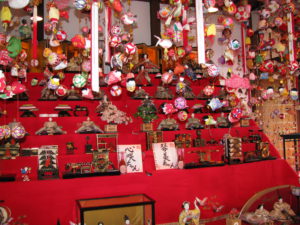 |
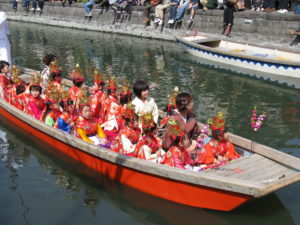 |
Kyokusui-no-en at Dazaifu Shrine
Vermilion-lacquered cups full of sake are set afloat down the stream.
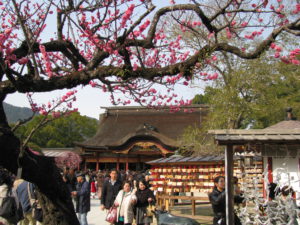 |
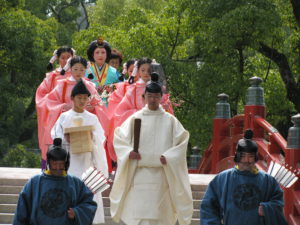 |
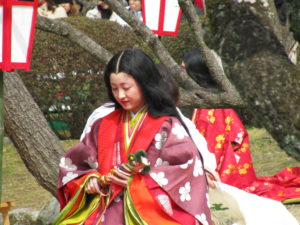 |
Before the cups reach each of the participants sitting along the stream, they have to
The ceremony has its origin in a historical fact that Ono-no-Yoshifuru, an elder brother of a
noted-calligrapher Ono-no-Tofu, held a ceremony to appease the soul of Michizane
Sugawara and to beguile tedious hours in a rural life.
Tobata Gion Yamagasa, in Kitakyushu-city
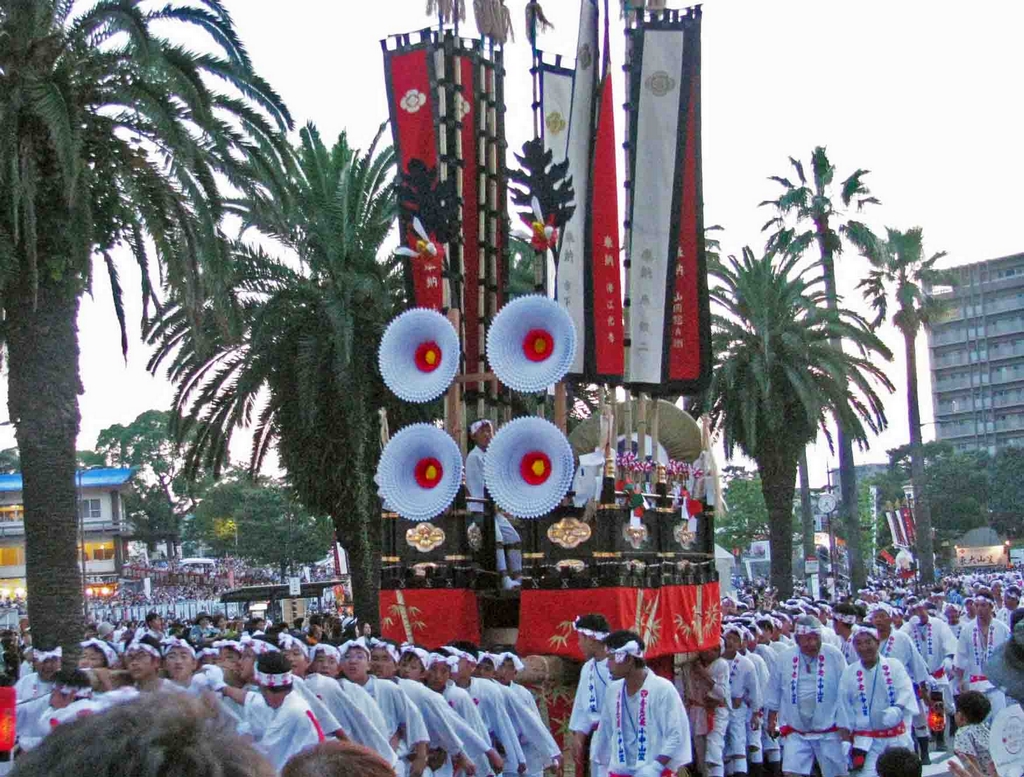 |
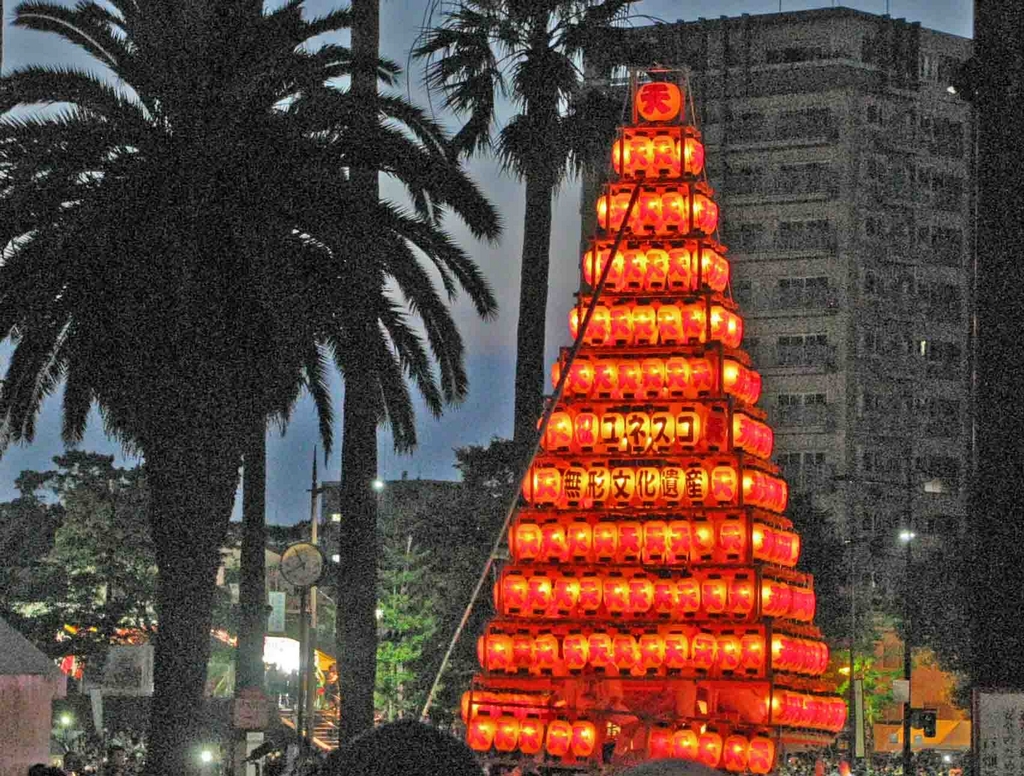 |
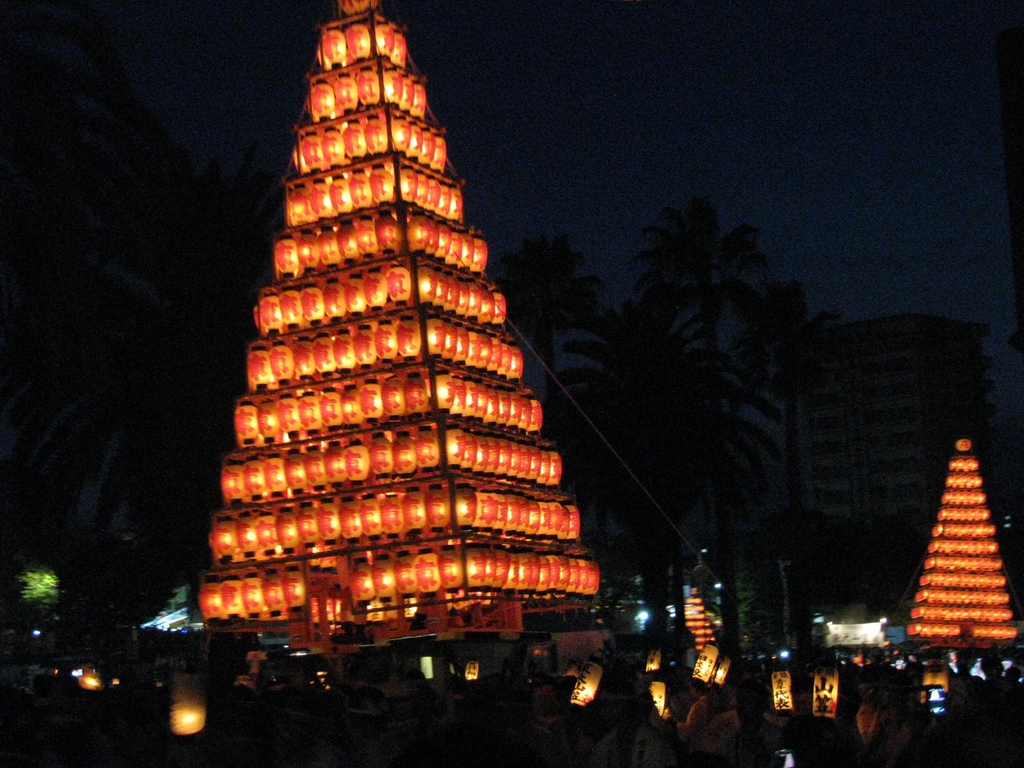 |
What is remarkable is the way the character of the Yamagasa changes from daytime,
Kokura Gion Daiko, in Kitakyushu-city
Kokura Gion Daiko is a summer festivals in which the main attraction is the playing the drums.
In 1958 the event was designated as an intangible folk cultural asset of Fukuoka prefecture.
On July 1st the Kokura Gion Taiko Uchizome-shiki (the ceremony to inaugurate Taiko practice
sessions) is held,and from that moment,Kokura’s exciting summer begins,
with each town and company group striving to perfect its own Taiko performance ahead of the
Festival which is held from Friday of the third weel in July.
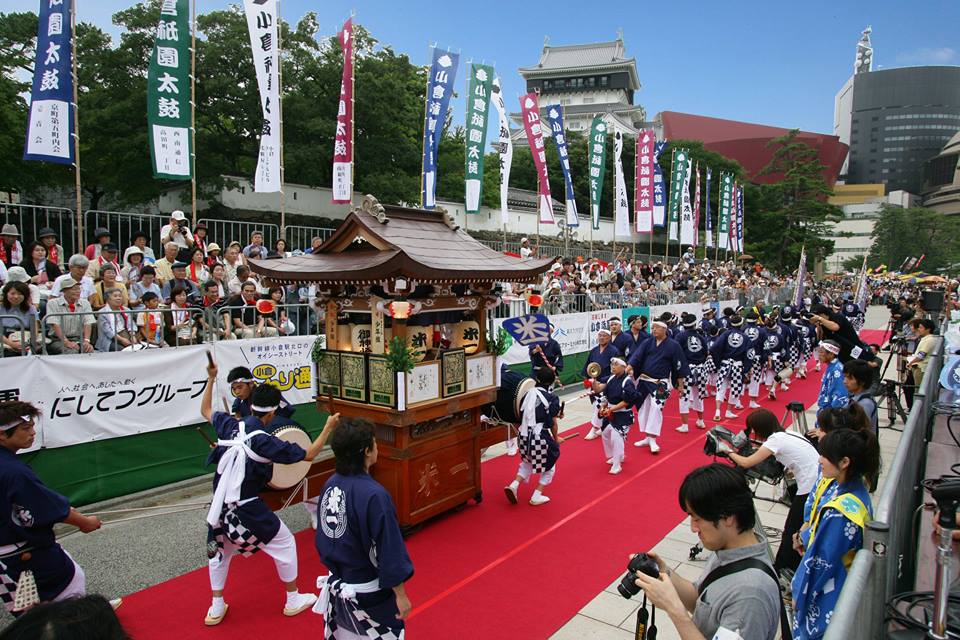 |
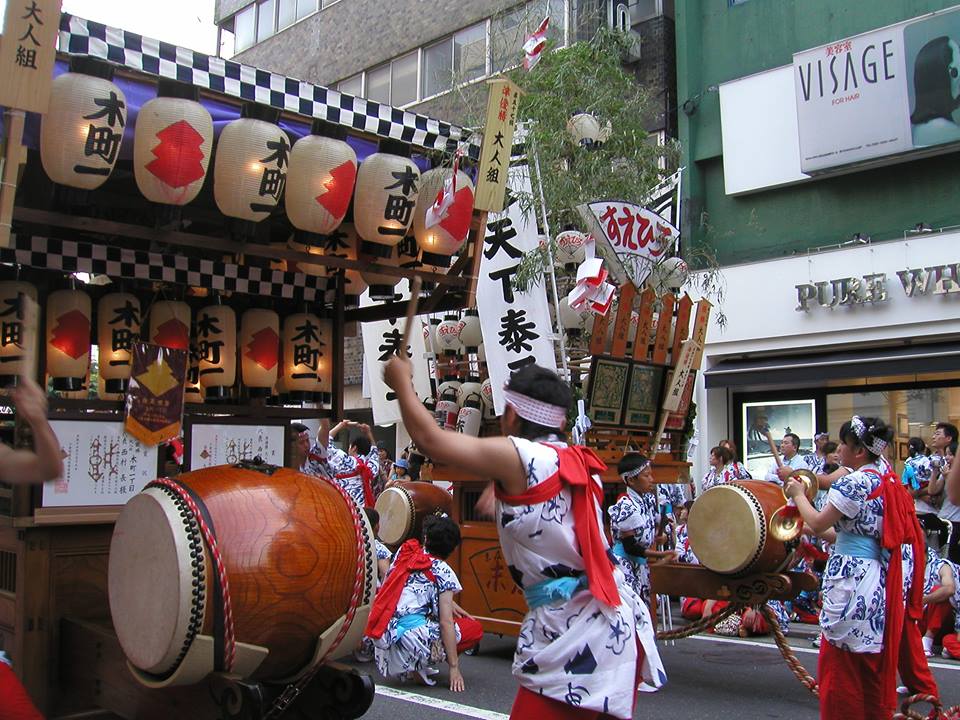 |
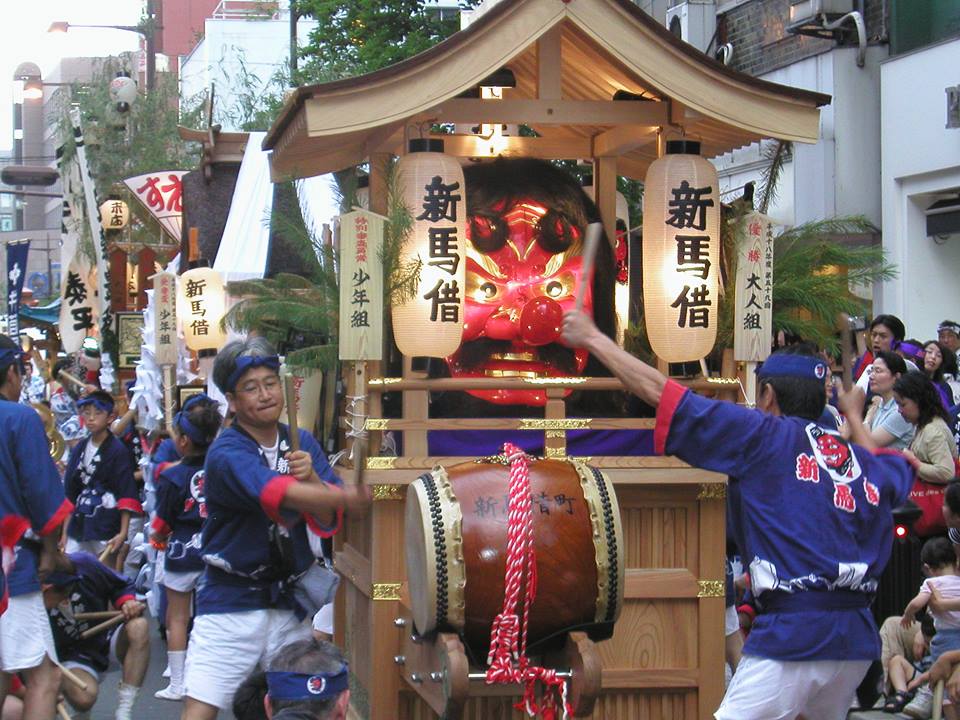 |
A prominent feature of the festival are the dashi (decorated cart) parades through the town,
carrying two drums,one at the front of the cart and one at the rear,with four drummers
beating the Taiko in time to gongs called jangara, and reciting the phrase Yassa Yare Yare.
The highlights of the Festival which you should not miss are the Taiko Performing Contest
held at Kokura Castle on July 16th; and the Taiko Performing Parade held at Komonji-dori
street on Sunday of the third week in July.

